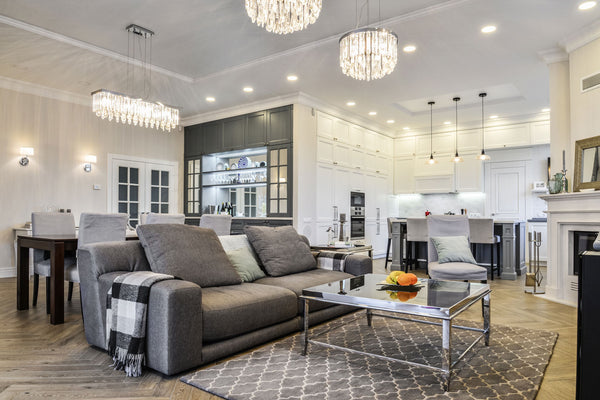On orders $99+
On orders $99+


As a new homeowner, it can be exciting to think about decorating and designing the interior of your home. One aspect of interior design that is often overlooked, but is crucial to the overall look and feel of a room, is lighting. Proper lighting can set the mood, highlight architectural features, and make a space more functional. Here are some tips to help you approach lighting design as a new homeowner.
Start with the basics. Before you start buying fancy light fixtures, make sure you have enough light in each room to begin with. This means having a combination of overhead lighting, such as recessed or track lighting, and table lamps or floor lamps.
Consider the function of the room. Each room in your home has a different purpose, and the lighting you choose should reflect that. For example, task lighting is important in a home office, while ambient lighting is key in a living room.
Layer your lighting. To create a more dynamic and interesting space, layer your lighting with a combination of overhead, task, and accent lighting. Accent lighting, such as wall sconces or table lamps, can be used to highlight artwork or other decorative elements in the room.
Use dimmer switches. Dimmer switches allow you to adjust the brightness of a light, which can be especially useful in a living room or bedroom. They also make it easy to create different moods in a room, depending on the occasion or time of day.
Think about energy efficiency. Consider energy-efficient lighting options, such as LED or CFL bulbs, to save on energy costs and reduce your carbon footprint.
Use natural light. Natural light is the most beautiful and energy-efficient light source available. Use window treatments that can be adjusted to allow more or less light into a room depending on the time of day, or use mirrors to reflect natural light and brighten up a space.
By keeping these tips in mind, you can create a beautiful and functional space that is well-lit and energy-efficient. Remember that lighting is an ongoing process, and you can always adjust and add to it as your tastes and needs change. Have fun experimenting with different lighting options, and enjoy your new home!
Leave a comment